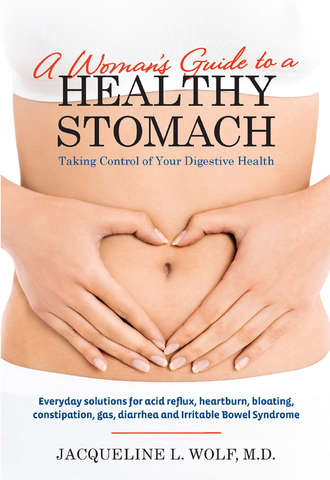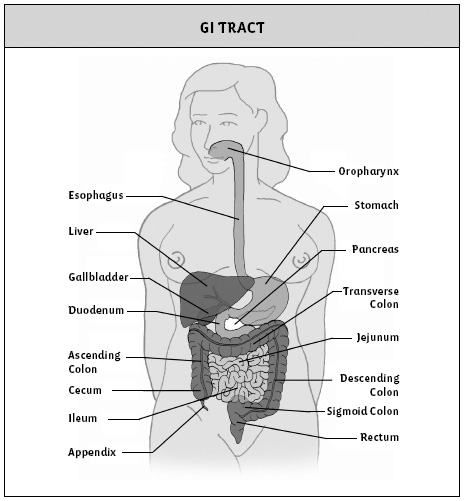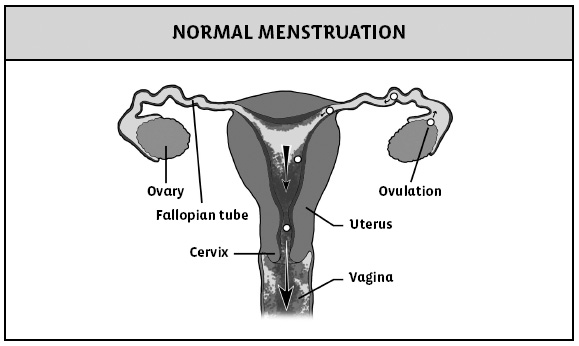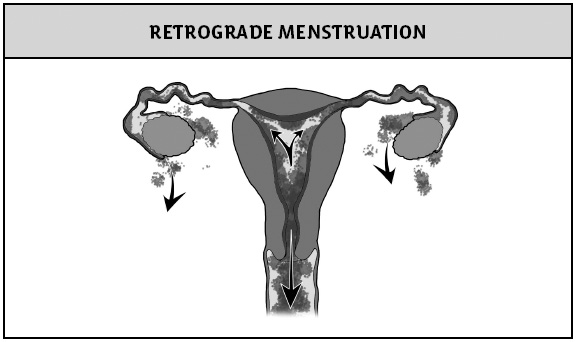
Полная версия
A Woman's Guide to a Healthy Stomach
10. “I can’t stop farting in public!”
You’re sitting in class or at a meeting when suddenly a noxious odor seeps from your body. You avert your eyes or stare suspiciously at that annoying guy from accounting, trying to pin the blame on him. We’ve all been there at one time or another. But for some women, this kind of deviousness is a way of life.
First try to reduce the foods that cause gas. Do you need to eliminate milk products, gas-forming vegetables or other foods? If, after changing your diet, you continue to have this problem, you may need to be evaluated with breath tests. Could you have a parasite? Does simethicone (Gas-X) or enteric-coated peppermint capsules (do not use if you have heartburn) help? If you still have gas after changing your diet, consider a diet that eliminates fructose, lactose and other carbohydrates that cause gas, or a specific carbohydrate diet, or consider trying probiotics. If flatulence persists, you could try purchasing carbon filter underwear, which is available online. This could help absorb the odor, although not the noise.
The following questions and answers will help you understand your digestive system:
What is normal digestive function?
Remember these four facts:
1 There’s a wide range of normal! Bowel movements can range anywhere from twice per day to three times per week. It’s about understanding what’s normal for you. If something feels off, don’t ignore it. Bowel movements are affected by where you are in your menstrual cycle. Due to hormonal changes, many women have diarrhea or loose stools during their period, and constipation leading up to it. Some women actually look forward to their periods to empty out their bowels, not just to reassure them that they aren’t pregnant.
2 Stool form varies from person to person and from event to event. No, it’s not always a firm, one-inch-wide and six-inch-long form with a curled end. It can depend on your diet and fluid intake. “Paperless” was the ideal state of the bowels described by Heinrich Böll in Group Portrait with Lady, in which the stool comes out in one complete piece and leaves no residue behind. However, not many people have this kind of stool.
3 Gas occurs in everyone! In fact, we all pass between a half quart (500 mL) to a quart and a half (1500 mL) per day if we’re normal. Some people make more gas than others. The amount depends on what you eat. It’s normal to pass gas ten to twenty times per day.
4 Check your meds! Medications, including herbs and over-the-counter medications, can sometimes cause constipation, diarrhea or heartburn. But remember: most people have heartburn at one time or another—40 to 50 percent of Americans monthly and about 10 to 20 percent weekly.
How soon after I eat should food be expelled from the body?
You should eliminate that delicious sushi feast or burrito dinner within three to five days.
As a woman, how does my digestive system differ from a man’s?
Well, we’re all human, and for men and women, the digestive tract is made up of the same parts. It is a hollow tube that travels from the mouth to the anus. When food is ingested, it migrates from the mouth through the esophagus into the stomach and then into the small intestine. The small intestine comprises the duodenum (which is short), followed by the jejunum and finally the ileum. Then, remaining food goes to the large intestine or colon. The small intestine is twenty to thirty feet long, while the colon is three to five feet in length.
But there are differences. A woman’s esophagus is shorter than a man’s regardless of her height. Also, a woman’s colon is often longer and “twistier” than a man’s. This could contribute to more constipation, although no one has looked at the association of the number of bowel movements with the length of the colon. (It definitely makes it harder to perform a colonoscopy on women!) Finally, what’s left of the food after its digestive tract travel is eliminated as waste.
Here’s a handy diagram:

Figure 1-1. The parts of the gastrointestinal (GI) tract with their locations are indicated. The food travels from the mouth through the esophagus, into the stomach and then out of the stomach into the small intestine. The small intestine is made up of (1) the duodenum, which is joined to the stomach in the upper right abdomen and then descends for a short distance before it heads across the belly to the left side, where it connects to the jejunum in the upper abdomen; (2) the jejunum; and (3) the ileum, which connects to the colon (large intestine) at the level of the cecum in the lower right side of the abdomen. There is no clear distinguishing characteristic marking the junction of the jejunum and the ileum. After the small intestine, the food travels into the colon at the level of the cecum. The main parts of the colon from cecum to rectum are indicated on the diagram. Bile is made in the liver, stored in the gallbladder and excreted into ducts. The common bile duct enters the small intestine in the duodenum. The pancreas makes digestive enzymes that are excreted into ducts, with the main duct entering the duodenum, usually with the common bile duct.
What does my digestive system do?
1 The saliva in the mouth moistens the food and starts the digestion process.
2 In the stomach, food gets mixed together, then broken down into smaller pieces, and digestion really starts in earnest with the help of acid and enzymes.
3 The small intestine breaks down the food substances with the help of more enzymes and proteins and absorbs nutrients and water into the body.
4 The large intestine (colon) takes out even more water to give you the stool form that we all know.
5 The intestines, particularly the colon, harbor helpful and harmful bacteria that produce nutrients and digest the food you eat.
6 The gut acts as a barrier to harmful substances and pathogens (organisms), keeping them out of the body.
7 The gut contributes to the immune response, making antibodies and fighting off disease.
8 The digestive system produces hormones and neurotransmitters that affect blood sugar, appetite and bowel function.
9 The digestive system eliminates indigestible substances as stool.
It’s disgusting to think that I have “germs” inside me. What do these bacteria do?
There are one hundred trillion bacteria in your body. A good number of these are in your digestive tract. Most times they’re working in perfect harmony with the body, helping to fight off bad bacteria and helping to digest your food. They make vitamins, as well as substances to help your body absorb the vitamins you ingest. But sometimes the ratio of good to bad bacteria becomes unbalanced, and symptoms or disease may become obvious. There is likely a healthy flora and it is unlikely to be the same in everyone. Lactobacilli and bifidobacteria are considered to be healthy bacteria.
What do bacteria have to do with weight gain and weight loss?
The more we learn about bacteria, the more we realize how much they influence our health. Take mice, for instance. Lean mice have different bacteria than obese mice, and it’s not just a result of the type of food the mice are eating. When obese mouse bacteria take up residence in a lean mouse, the lean mouse gains weight, even without eating any more food. There are two main kinds of bacteria that seem to change with obesity in mice. The obese mice have fewer Bacteroidetes and more Firmicutes. Human bacteria can take up residence in the intestines of mice that are raised without bacteria. When one group of mice colonized with human bacteria was fed a high-fat, high-sugar diet, typical for a Western diet, the mice gained weight and grew more Firmicutes and fewer Bacteroidetes. In mice fed a low-fat, plant-based diet, the bacteria ratios were reversed. The change in bacteria to a high concentration of Firmicutes could occur in less than one day when the mice fed a plant-based diet were switched to a high-fat, high-sugar diet. It appears the bacteria may be important in people, too. In obese twins, there are fewer Bacteroidetes and more Actinobacteria than in lean twins. The bacteria that are present in obese individuals are more efficient at extracting calories from carbohydrates. Limited studies show that weight reduction in adolescents results in a change of bacterial flora. Furthermore, studies show that after gastric bypass surgery, patients had a change in their bacteria.
The types of bacteria associated with obesity may even be present before obesity occurs. Why is this important? The bacteria extract calories from carbohydrates and fats, and they stimulate the body to absorb these substances into the body and lay down fat. My patients have often told me that they can’t lose weight, even though they are eating very little, or that they have even gained weight without overeating. These women were counting their calories, and they weren’t snacking. Could it be that their bacteria are responsible? Could their intestines just be more efficient in absorbing nutrients (i.e., calories)? Can changing the gut flora result in weight loss? I’m speculating, but I believe the answer is yes. Only future studies will show if I’m right.
I hear a lot about probiotics and prebiotics. What are they?
Probiotics are living organisms thought to have good effects on one’s health. They are similar to bacteria that are normally found in the intestines that do not cause disease and are often designated “good bacteria.” The most common probiotics currently in practice contain a combination of Lactobacillus, Bifidobacterium, Streptococcus and other bacteria, or the yeast Saccharomycetes boulardii. Probiotics are present in some foods such as yogurt, fermented and unfermented milk, some juices and soy beverages. A large variety of probiotics are sold as supplements in capsule and powder form. Studies showing the utility of probiotics for immune health and gastrointestinal diseases are limited. Further discussion of the utility of probiotics for different conditions can be found in later chapters. However, it’s important to keep in mind that no generalizations can be made regarding the effectiveness of an untested probiotic for a specific condition. Furthermore, it is unknown if a probiotic good for one person will be helpful for another.
Probiotics are often given to a person on antibiotics for protection against the development of Clostridia difficile bacterial infection. This infection occurs after the antibiotics kill off other gut bacteria that might keep the C. difficile in check.
Here’s an interesting tidbit: One study in pregnant women published in preliminary form suggests that probiotics may be helpful in preventing pregnant women from developing obesity twelve months after the end of pregnancy. Further studies are needed to confirm this finding.
Prebiotics, meanwhile, are nutrients for the healthy bacteria. These nutrients, typically complex carbohydrates, are not digested by your gut and provide the bacteria a food source. Common prebiotics are inulin and oligofructose.
What are the most common stomach ailments?
Food poisoning is a biggie. It seems there’s always a new scare out there: Don’t eat raw eggs or undercooked chicken unless you want a nasty case of Salmonella or Campylobacter. Is a little taste of batter safe when you make a cake? (How many of us remember joyfully eating cake batter or cookie dough as kids?) There are warnings for raw meat, but fruit and veggies must be safe, right? Not so fast. Along comes the chance of food poisoning from contaminated spinach and tomatoes!
We’ll all get food poisoning at one time or another. Other common ailments are heartburn (GERD), constipation and diarrhea, irritable bowel syndrome (IBS), and colorectal cancer. But don’t panic. For most stomach issues, there’s a logical and highly treatable explanation. In fact, about thirty-five million people have IBS, belly pain or discomfort with a combination of gas, bloating, diarrhea or constipation. I’ll discuss this more in Chapter 3.
How do I know when to seek help?
Many people endure months or years of gas, constipation, diarrhea and/or abdominal pain. They live with it. But when is it important to seek medical attention to make sure that nothing is seriously wrong? No one wants cancer, of course, but colon cancer is usually curable if caught early. Therefore, even if you feel well and have no belly problems and no family history of colorectal cancer, it’s important to do routine screening starting at age fifty (forty-five for African-Americans). And know the warning signs below that could indicate cancer or other GI problems.
WARNING SIGNS: CONSULT YOUR DOCTOR IF YOU HAVE ANY OF THESE SYMPTOMS
1. Rectal bleeding
Any rectal bleeding is abnormal and must be checked out. Although blood only on the toilet tissue when you wipe may just indicate a local cause, such as hemorrhoids, any blood should result in you seeking attention and being examined, usually via colonoscopy.
2. New onset of abdominal pain
There are many causes of abdominal pain, some of which require immediate attention. Usually, troublesome abdominal pain surfaces suddenly, with or without fever. However, it can be present for a long time under the radar before it becomes more frequent or severe.
3. Unintentional weight loss
4. Dehydration
Symptoms can include decreased urine production, thirst, dry mouth and eyes and dizziness.
5. New onset or worsening of diarrhea
Diarrhea springing from a virus or a bacterial infection often goes away on its own but sometimes requires further treatment if it is severe, with many watery stools (with or without abdominal pain), or if the symptoms persist for a long period of time. If the diarrhea continues for more than three days, consult your doctor.
6. Sudden change in the appearance of the stools or new and persistent constipation
Pencil-like or thin stools may indicate a narrowing in the colon.
7. The sensation that you have a mass, or a hard area, in the abdomen
8. Weakness and dizziness
This could indicate dehydration or anemia.
9. Prolonged fever
10. Repeated vomiting over a short period of time
11. Sudden onset of bloating that won’t go away
Bloating can be due to gas, fluid in the abdomen, stool or sometimes a mass. If there is a blockage in the bowels, the abdomen can bloat up behind it, which usually causes pain. If you feel unusually bloated, consult your doctor.
Other problems, such as joint pain or a rash, can often be associated with gastrointestinal issues.
REMEMBER: You know your body better than anyone else. If you feel that something is wrong, check in with your doctor. Don’t be afraid!
Chapter 2
Endometriosis and Feminine GI Troubles: Symptoms Every Woman Should Understand
“Man endures pain as an undeserved punishment; woman accepts it as a natural heritage.”
—Anonymous
We women tend to feel stress in our guts more so than men, and we talk about it less, tending to bottle up our stress. We also have unique stomach issues, too, that simply don’t affect guys. In this chapter I’ll talk about women-only issues like endometriosis and infertility (5 percent of women suffer from endometriosis, and 25 percent of sufferers are infertile), and touch on some other female-centric ailments. You’ll meet two of my patients, Marci and Susan, both of whom went through excruciating journeys to finally get proper treatment. Their cases are extreme but instructive: if one is properly armed, endometriosis is treatable, but it can be very hard to detect.
Women don’t usually come to me thinking that endometriosis could be causing their gastrointestinal symptoms. In fact, many times women have either never heard of endometriosis or have had it in the past, and they certainly don’t connect this problem with any gastrointestinal symptoms, thinking it’s a purely gynecological issue. I’m not a gynecologist, and I don’t treat women for endometriosis. However, I have seen many women with GI symptoms caused by endometriosis, often erroneously diagnosed as irritable bowel syndrome. Once I suspect the diagnosis, I can refer the woman to an expert who can decide what tests should be done and what treatment should be recommended for the problem.
When I tell women that they may have endometriosis, the women usually have a laundry list of questions. This is good. I find too many doctors who are not gynecologists know very little about endometriosis, and most gastroenterologists don’t even suspect it as a possible cause of symptoms. They often settle on a diagnosis before their patient has been properly heard. In order to understand what endometriosis is, it’s helpful to review the anatomy of the gynecological tract and normal menstruation. (See Figure 2-1).

Figure 2-1. Menstruation is monthly bleeding from the uterus. The menstrual cycle is considered to start with the first day of bleeding. The next cycle begins at the time of first bleeding with the subsequent period. During the first half of the cycle (follicular phase) an egg in the ovary matures and the wall of the uterus thickens. At about day fourteen the egg is released from the ovary (ovulation) and travels through the fallopian tube to the uterus. The uterus lining continues to thicken (luteal phase). Then, if no fertilization of the egg with sperm takes place, the lining of the uterus is shed and discharged through the cervix and vagina as your period. Oral contraceptive pills will interrupt the menstrual cycle, but when menstruation occurs, it is normal.
Here are some common questions I hear from my patients:
Several of my friends have endometriosis, and one of them is having trouble getting pregnant. What is it?
Endometriosis occurs when the cells that line the wall of the uterus—which a woman should pass with each menstrual period—end up growing outside the uterus instead. During normal menstruation the uterine lining cells exit through the vagina (see Figure 2-1). But almost every woman also has retrograde menstruation in which some of the uterine-lining cells travel out the fallopian tubes and into the pelvic cavity, thereby tracing the egg’s path in reverse from ovary to uterus (see Figure 2-2). This is called retrograde menstruation. When a person develops endometriosis these cells take up residence in the wrong places—sometimes even growing in and sticking to the bowel and other nearby organs—and can bleed with each period, causing pain and scarring. When this happens, a woman might get cyclical or constant abdominal pain. Usually, the endometriosis exists in the lower region of the pelvis, but it can creep onto other organs, too. (See Figure 2-3). Bowel endometriosis affects about one-third of women with endometriosis and can cause severe pain with bowel movements.

Figure 2-2. The menstrual cycle is the same as in normal menstruation. However, when the lining of the uterus is shed, it does not travel exclusively through the cervix and vagina. Some of the cells from the uterine lining travel upward, through the fallopian tubes and then out into the pelvis. This sets up the possibility for endometriosis to occur.

Figure 2-3. Endometriosis occurs when the cells of the lining of the uterus take up residence outside of the uterus. The endometriosis lesions can be different sizes and vary from clear to red to black. This drawing shows the common areas where endometriosis occurs and the close proximity of the bowel to the uterus, which explains how endometriosis might end up on the bowel. The sigmoid colon is behind the uterus (toward the spine) and the rectum is behind the vagina. The rectouterine fold, also known as the uterosacral ligament, connecting the uterus and the sacrum, part of the spinal column, is a common place for endometriosis. The broad ligament connects the uterus to the wall of the pelvis and is in a perfect location for implantation of the endometriosis.
Is endometriosis common?
Approximately 5 percent of all menstruating women and girls suffer from endometriosis. However, for women who are infertile and can’t get pregnant naturally, endometriosis can be the case 25 to 40 percent of the time! For teenage girls with very painful periods, endometriosis is the cause nearly 50 percent of the time.
If almost every woman has period cells that pass from the fallopian tubes, why don’t all of us who still menstruate have endometriosis?
Women who do get endometriosis have several things going on: First of all, the cells have to stick to a place where they can grow and attract more cells. These cells then have to form blood vessels within the clump or implant—not an easy feat! Genetics and environmental factors also play a part. How your body reacts to these misplaced cells strongly contributes to the damage the endometriosis may cause.
Interestingly, tall, thin women are more likely to have endometriosis than short, heavy women. Ahem! This does not mean you should gain weight to decrease your risk for endometriosis. Obesity, of course, has many negative effects on your health. Some studies have shown that caffeine and alcohol intake also increase the risk of endometriosis, while smoking and exercise reduce the risk. (Of course, I’m not going to endorse smoking, either.)
I feel bloated and crampy all the time. My doctor says it’s IBS. My coworker has endometriosis and told me I probably do, too, based on my symptoms. I’m starting to freak out. How do I know that I don’t?
Endometriosis can be tough to diagnose because several of the symptoms—like diarrhea and cramping—can mimic irritable bowel syndrome (IBS). Don’t settle for an IBS diagnosis, especially if you’re having trouble conceiving. Here are some symptoms of endometriosis:
The Big Ds
Dysmenorrhea—Otherwise known as debilitating menstrual cramps.
Dyspareunia—Painful sex.
Dyschezia—Painful bowel movements.
Dysuria—Painful or uncomfortable peeing.
PLUS:
Recurrent miscarriage—Particularly pregnancies that end within two to three months.
Nausea, vomiting and/or diarrhea—Particularly during PMS.
Unusually long or short menstrual periods—a normal period should last between three and five days.
What is the best way to diagnose endometriosis?
The best way to make the diagnosis is by a surgical procedure called a laparoscopy. In this procedure, a small cut is made under the belly button, infused carbon dioxide distends the belly and a scope is inserted. The gynecologist or surgeon looks around to identify any raised blue, red or clear areas that could be endometriosis and examines the ovaries for cysts. Often these areas can be treated, and scar tissue can be cut (released).
Surgery is not always needed for the diagnosis. Other tests can be done but might not be as good for detecting very small lesions or for identifying scar tissue. These tests include an MRI (magnetic resonance imaging) scan of the pelvis, which can identify pelvic endometriosis; a CT (computerized tomography) scan with air or contrast in the rectum; and an air-contrast barium enema (to detect endometriosis on the bowel). An endoscopic ultrasound, in which an ultrasound device on the end of a scope is inserted into the rectum, can take images of the surrounding area and often see if there is endometriosis in the bowel wall. Traditional ultrasounds, with the ultrasound probe placed on the abdominal wall or in the vagina, and colonoscopies aren’t particularly helpful for the diagnosis of endometriosis.
If endometriosis is so common, why is it so hard to pinpoint and diagnose?




